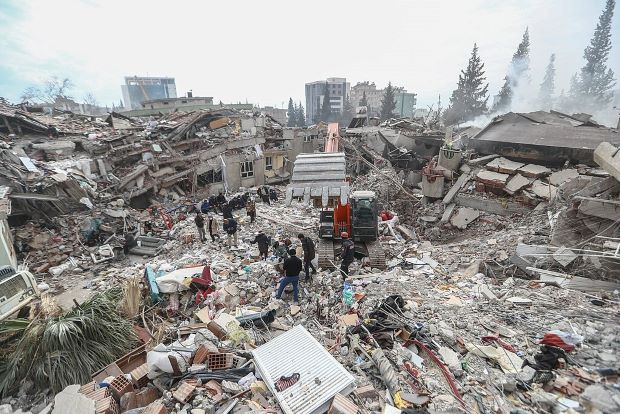February 6 in History
2023 - Two earthquakes measuring Mww 7.8 and 7.5 struck near the border between Turkey and Syria with a maximum Mercalli intensity of XII (Extreme). The earthquakes resulted in numerous aftershocks and a death toll of 57,658 people
At 4:17 TRT (01:17 UTC) on this day in 2023, a Mw 7.8 earthquake struck southern and central Turkey and northern and western Syria, killing tens of thousands and causing widespread damage.
The earthquake had a maximum Mercalli intensity of XII (Extreme) around the epicentre – located 37 km west–northwest of Gaziantep – and in Antakya. It was followed by a Mw 7.7 earthquake at 13:24 centred 95 km north-northeast from the first causing widespread damage and tens of thousands of fatalities.
The Mw 7.8 earthquake is the largest in Turkey since the 1939 Erzincan earthquake of the same magnitude, and jointly the second-largest in the country, after larger estimates for the 1668 North Anatolia earthquake. It is also one of the strongest earthquakes ever recorded in the Levant, and was felt as far as Egypt and the Black Sea coast of Turkey. There were more than 30,000 aftershocks in the three months that followed. The seismic sequence was the result of shallow strike-slip faulting along segments of the Dead Sea Transform, East Anatolian and Sürgü–Çardak faults.
There was widespread damage in an area of about 350,000 km2, about the size of Germany. An estimated 14 million people, or 16% of Turkey’s population, were affected. Development experts from the United Nations estimated that about 1.5 million people were left homeless.
The confirmed death toll in Turkey was 53,537; estimates of the number of dead in Syria were between 5,951 and 8,476. It is the deadliest earthquake in what is now present-day Turkey since the 526 Antioch earthquake and the deadliest natural disaster in its modern history. It is also the deadliest in present-day Syria since the 1822 Aleppo earthquake; the deadliest worldwide since the 2010 Haiti earthquake; and the fifth-deadliest of the 21st century. Damages were estimated at US$148.8 billion in Turkey, or 9% of the country’s GDP, and US$14.8 billion in Syria.
Damaged roads, winter storms, and disruption to communications hampered the Disaster and Emergency Management Presidency‘s rescue and relief effort, which included a 60,000-strong search-and-rescue force, 5,000 health workers and 30,000 volunteers. Following Turkey’s call for international help, more than 141,000 people from 94 countries joined the rescue effort.
–Wikipedia



Comments are closed, but trackbacks and pingbacks are open.